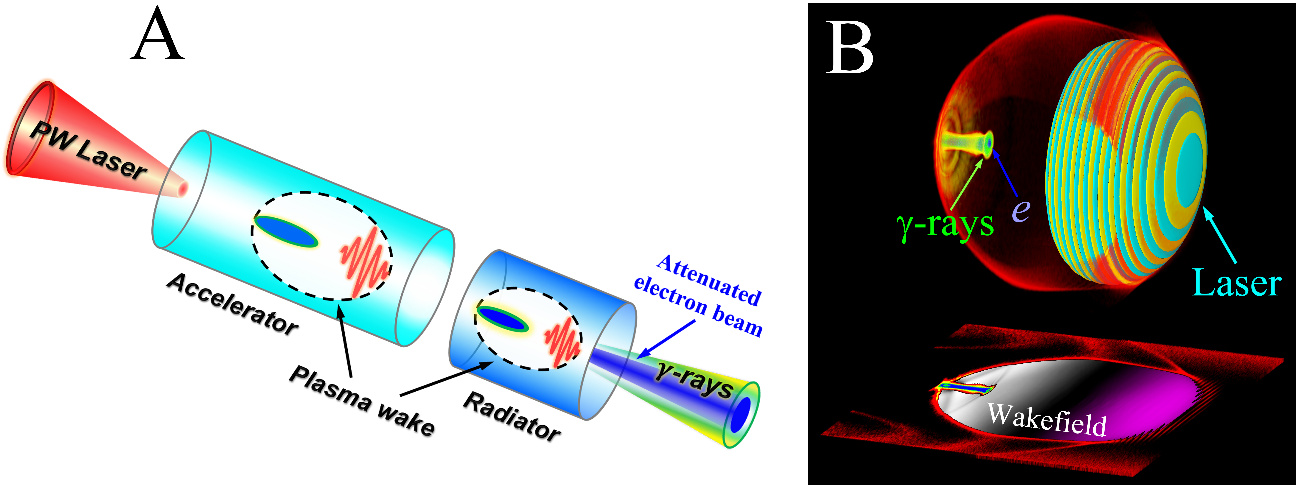Extremely Brilliant High energy Gamma-rays from a Two-stage Laser Wakefield Accelerator
A new concept for generating extremely brilliant gamma-rays with energy up to the GeV level has been proposed in research led at the University of Strathclyde.
Bright sources of high-energy gamma-rays are applied in a broad range of areas, from fundamental research in astrophysics, particle and nuclear physics, to high-resolution imaging in chemistry, biology, medicine, materials science and industry. These applications can benefit greatly from the availability of compact gamma-ray sources with low divergence, short pulse duration, high energy and high peak brilliance. At present, synchrotrons and X-ray free-electron lasers (XFELs) can deliver brilliant X-ray pulses. However, they are normally limited to photon energies ranging from a few keV to hundreds-of-keV, and peak powers in the multi-GW level. In addition, the size and cost of these large research infrastructures limit their accessibility for many potential users. There is significant interest in extending the photon energy to above the tens-of-MeV level for various applications. For example, in Romania a dedicated gamma-ray facility for the Nuclear Physics pillar of the Extreme Light Infrastructure (ELI-NP) as a major European Infrastructure project is under construction. This will deliver brilliant gamma-ray beams with tunable energy up to 20 MeV, which is obtained by the back-scattering of optical photons from electrons with up to 720 MeV energy, accelerated by a LINAC.
In the present research, published in Science Advances 6, a novel scheme is proposed to efficiently produce collimated ultra-bright gamma-ray beams with photon energies tunable up to GeV, based on a two-stage laser wakefield accelerator (LWFA) using a multi-petawatt laser pulse. The first stage, involving a moderately low-density plasma, produces a multi-GeV electron beam with a high energy efficiency of ~40%, while the second stage uses a relatively high-density plasma to produce MeV-GeV gamma-ray radiation with an efficiency of over 10%. The resulting photon number, energy efficiency, peak brilliance, and power are several orders of magnitude higher than existing LWFA-based sources. The maximum peak brilliance of gamma-rays is over 1026 photons s−1 mm−2 mrad−2 per 0.1% bandwidth at 1 MeV, which reaches up to the XFEL level, making them an ideal source for investigations in nuclear photonics.
Another interesting feature asociated with this scheme is that radiation reaction and quantum effects are involved, due to generation of a dense and high charge electron beam of multi-GeV energy. This radiation mechanism could be tested experimentally in the ELI facilities and other high power laser facilities with peak power of the order of 10PW that will be available soon. This work was led by Prof. Zheng-Ming Sheng in collaboration with Prof. Paul McKenna, Prof. Dino Jaroszynski and partners in China.

Concept of the compact bright γ-ray source. (A) Schematic of the two-stage scheme. (B) Three-dimensional view of gamma-ray radiation generation in a laser-driven plasma wakefield, obtained from particle-in-cell simulation.
June 2020